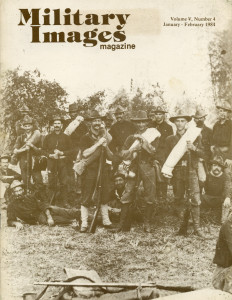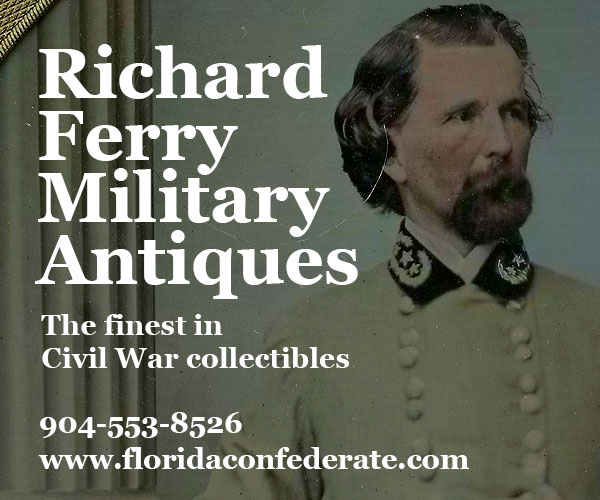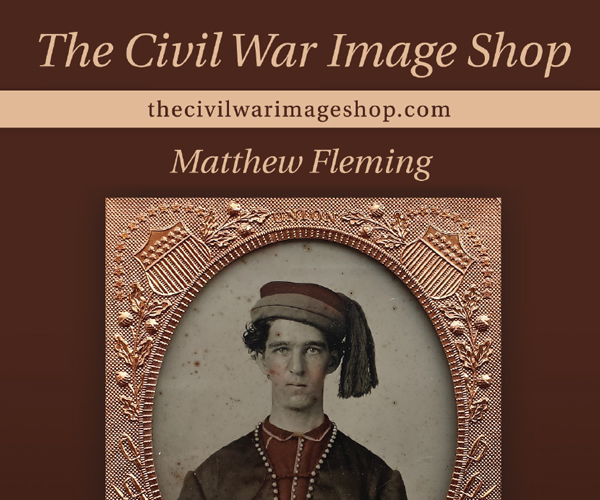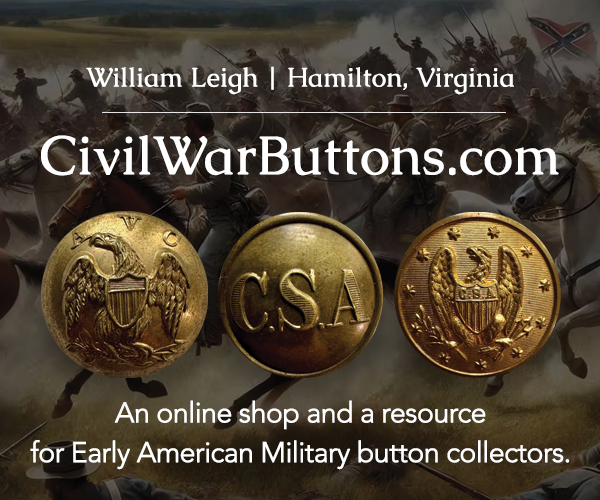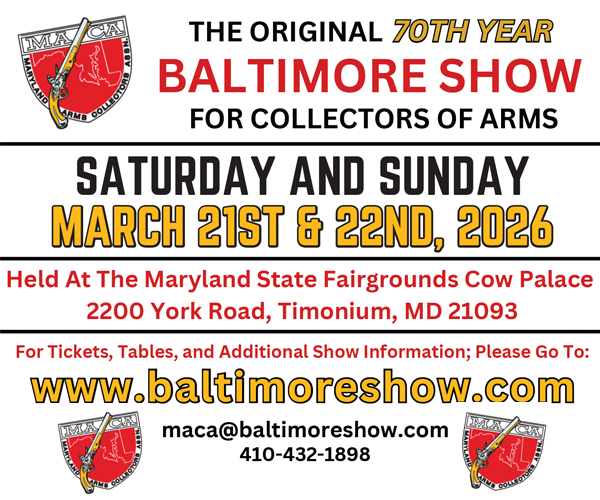The complete issue
Vol. V, No. 4
(32 pages)
Print edition: Visit our store to check availability
Digital edition: Visit JSTOR.org to purchase
Subscribe to MI
Explore the MI Archives: Browse | Advanced search | Tutorial
Inside
Cover image
Turn-of-the-century U.S. infantry are in this group photograph, likely taken in the Philippines.
Editor’s Desk (p. 1)
The editor writes about the last of Joseph Bilby’s last in his series of articles on the 15th New Jersey Infantry. He also outlines further contributions by Mr. Bilby, as well as anticipated articles ranging from a survey of sharpshooter uniforms to further unit histories to a pictorial of Civil War battleflags.
Mail Call (p. 2)
There are requests for information from a few readers as well as from Military Images. Two points of clarification are provided by readers. One is that the “table knives” in the belts of two soldiers identified in a previous issue are actually ornate silver-hilted Bowie knives. A badge is also identified as coming from cavalry saddles, initially used with the 1847 Grimsley dragoon saddle. In addition, the episode described between Dr. Gibbs and Stephen Crane was the inspiration for Crane’s story “The Upturned Face.”
Seeing the Elephant: 15th New Jersey at Salem Church by Joseph G. Bilby (pp. 3-4, 6-15)
The article begins by recounting the events that are now collectively known as the Battle of Chancellorsville in early May 1863. Taking place in and around the difficult “Wilderness” that predominated the area, the focus of the article is on the men of the 15th New Jersey, who held a position covering the Union left flank as it advanced on the Confederate-held Marye’s Heights. Known as Second Fredericksburg, the Confederates were thrown back and retreated towards their main army in action at Chancellorsville, with Federal units, including the 15th New Jersey, following behind. McLaws’ Division was sent by Lee to support Wilcox’s forces. They met up at Salem Church, and there on May 3, 1863, the fighting commenced. The author provides many individual stories, such as that of Private Abraham Baird of Company E, whose image is included in the article, as well as two sidebars discussing “Regimental Strengths in the Civil War” and a letter written by Col. William Penrose of the 15th regarding the failure of the Enfield muskets distributed to his troops. The article concludes with an “Epilogue” which tells the further stories of some of the individual soldiers included in the article.
The Famous “Petersburg” Photo by Brian Pohanka (p. 5)
Inset in the article by Joseph Bilby, the image which has been usually identified as being taken of troops during the Siege of Petersburg was actually taken just prior to the action at Salem Church, the topic of the article in which it has been inserted. The detailed history of this and two others taken by A.J. Russell at the time will be the topic of a future issue of MI.
That Crazy Cap by Monte Akers (pp. 16-19)
Probably one of the most unique examples of Civil War headgear, seven examples of New Hampshire’s 1st through 5th Volunteer Infantry are presented in this pictorial. These units are often misidentified as Confederates, as the state of New Hampshire also issued their infantry units with grey coats. But it is the dark wool hat with the leather brim on front and back to ward off the sun that identifies them as belonging to the initial New Hampshire infantry regiments.
Vignette: Lt. Stephen C. Mills by Michael J. Winey (pp. 20-21)
After graduating from West Point in 1877, Stephen Crosby Mills was eventually given a most unique assignment. He was sent to San Francisco as part of the 12th U.S. Infantry, but spent four years as commander of Company D, Indian Scouts. He led six-month enlisted companies of Apache, and appears to have been successful. The two photographs that accompany the article show that he did not wear regulations uniforms, as his personal gear was often lagging behind as he moved across New Mexico and Arizona territories, which led to an amusing anecdote between Lt. Mills and General William T. Sherman at a formal reception in Tuscon, Arizona in 1880.
5th Kansas Cavalry: a Photo Album by Gregory Hermon (pp. 22-24)
The photo album, which includes the image of Brig. Gen. Powell Clayton and twelve of the men of the 5th Kansas Cavalry, was a unit begun under the patronage of Senator James H. Lane, who held a commission as a general issued by the War Department. The men we not prepared to fight and spent a good deal of time raiding in Missouri, giving William C. Quantrill a reason to raid Lawrence, Kansas a few years later. Under the command of Gen. Clayton, the 5th Kansas became a well-trained and more disciplined unit, talking part in many smaller engagements rather than large-scale battles, with their worst defeat coming when a detachment of the 5th was taken as it defended a wagon train at Mark’s Mills in 1864.
Stragglers (pp. 26-29)
Recreation time for some soldiers during the Civil War is shown, with soldiers playing cards and others playing chess. A rare glimpse of the insignia of a Master Gunner in the Coast Artillery is found in a group photo postcard taken between 1904 and 1908. Two images ask for help in identification from the readership: a Yankee with a buckle with “VVB” on it from the Civil War is the first, while the second is a ninth-plate ambrotype of what could be “a Chicago fireman, a Georgia militiaman, or anything in between.” The saddlery seen in one image of a 7th Cavalry trooper identifies yet another image as being taken between 1892 and 1894. The last image in this set of “Stragglers” is of Israel W. Coombs, Company G, 1st Maine Cavalry, complete with a Smith carbine.
Passing in Review (p. 30)
Three publications are reviewed in this issue of Military Images; one is reviewed separately while two are reviewed together. The Banana Wars: an Inner History of American Empire, 1900-1934 by Lester Langley investigates the history of American military interventionism in the first half of the twentieth century; the reviewer found the parallels with contemporary current events remarkable, and thought that much could be learned from Langley’s volume. The books My Dear Parents by James Horrocks and Reminiscences of Confederate Service by Francis W. Dawson both recount the memoirs of two Englishmen who fought for the Union and the Confederacy respectively. While they had different motivations for enlisting, the volumes do show how the Civil War was perceived by outside participants.
Back Image
This 1861 image of a Scottish piper is a half-plate ambrotype image of Thomas F. Campbell, a veteran of Waterloo, and a Union soldier.


